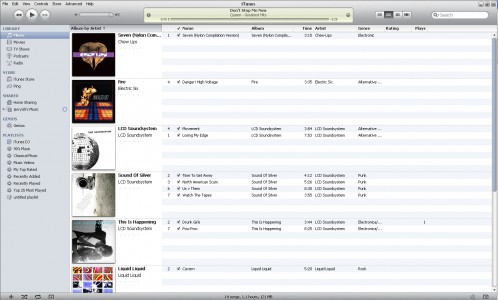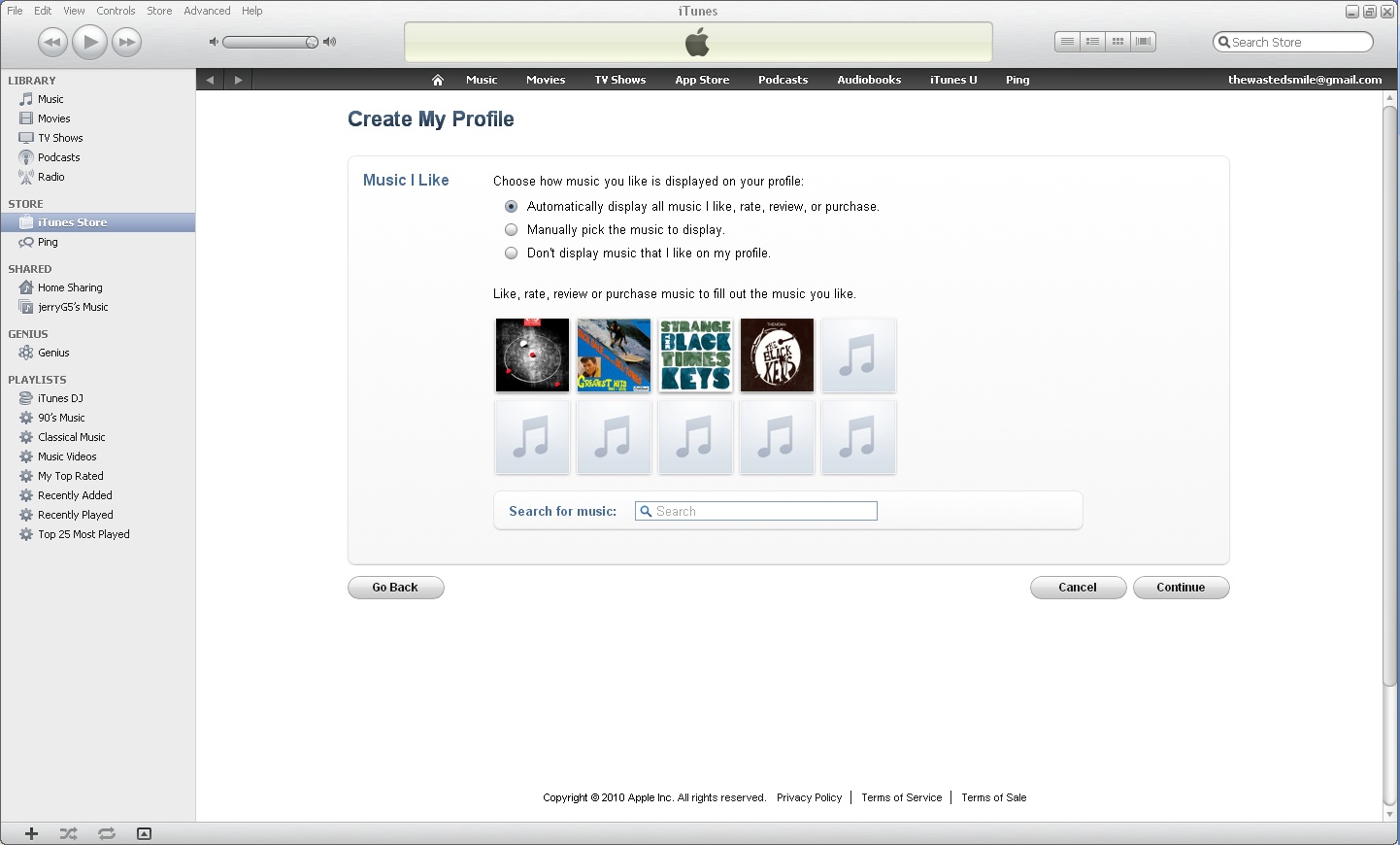Realizing that sites such as Facebook aren't going away, Apple is now beefing up music discovery capabilities in iTunes via its new social networking engine, called Ping.
Like Facebook, Ping will let iTunes users follow friends and artists' news feeds and listening habits, and see when and where their favorite musicians are playing, among other things.
Now that Ping has been released, we went hands-on to see what it's all about. Is Apple's new music-centric social network going to be an instant classic, or a one-hit wonder?
iTunes 10 is easy enough to set up--you can download the program on Apple's website and installation is the same as always. Everything is mostly unchanged--in particular, the album art browser integration that Jobs showed off cleans up the interface considerably.
Ping, which is nestled right next to the Store icon, is tied into your iTunes account, and when you open up the service for the first time, it'll ask you to log in. After this, you'll be walked through several steps to create your Ping profile, which includes choosing songs for the "Music I Like" sidebar: This displays up to 10 songs and works similarly to MySpace's "Top Friends" feature.
Compared to Facebook's Byzantine settings, Ping's privacy controls are very basic and straightforward--you can choose to let others follow you (provided you approve them), or disallow any followers.
Like Facebook, the news feed is the centerpiece of Ping's user experience. Here, you'll see status updates from the people and artists that you follow. Items range from songs that users liked and videos to concert plans and recent purchases, all of which you can "like" and comment on.
Sign up to receive The Snapshot, a free special dispatch from Laptop Mag, in your inbox.
Artist pages function similar to band pages on Myspace. On cellist Yo-Yo Ma's page-he's one of a handful of artists who had pages ready for Ping's launch--you can see information such as photos and videos posted by him. Ma's page, like other artist pages, shows information like status updates while he's on tour, photos that he posted and concert listings. If you say that you plan on going, that information also shows up in your activity feed.
Right now, though, the biggest problems with Ping come down to numbers. There aren't many artists or people who've jumped onto the Ping bandwagon and for a social network that's built on connecting those two groups, that's a major problem.
When we searched Ping, we couldn't find pages for a number of major bands, such as Arcade Fire, Ke$ha, and LCD Soundsystem. Likewise, it's a massive burden to simply try and find people to follow--the only way to add contacts is by manually inserting email addresses. No options exist for combing address books or other social networks to find contacts who also use Ping.
Despite being prominently featured in many of the promotional photos from yesterday's conference, Facebook Connect also isn't included in Ping, as of today. However, Cult of Mac did spot Facebook Connect in Ping, suggesting that Apple pulled Facebook out of Ping late in the game--Jobs told AllThingsD's Kara Swisher that they couldn't agree to Facebook's "onerous terms."
Ultimately, Ping's limited usefulness undercuts much of the network's potential. Given iTunes' ubiquity and the fact that Ping is thoroughly integrated into the program, the service already has a massive user base. There's a lot of interesting functionality within Ping, but without a way to easily add friends and build the social aspect of the network, it can't help but feel like a bit of a letdown for now.



